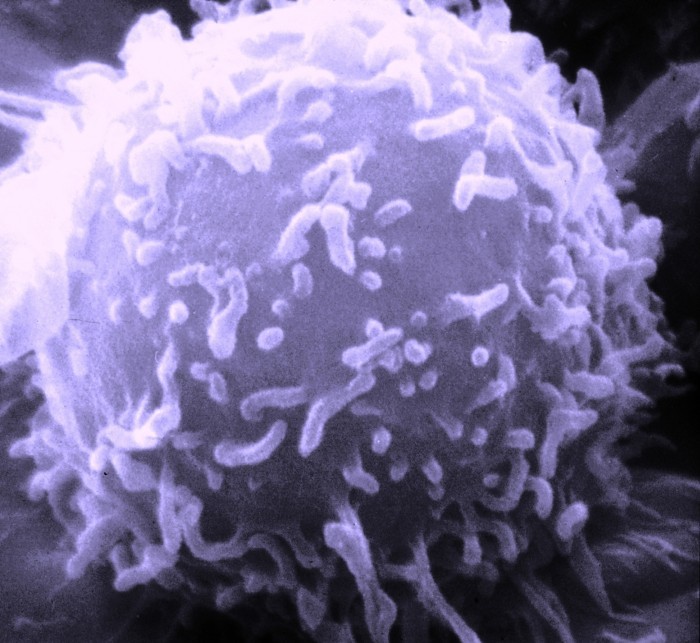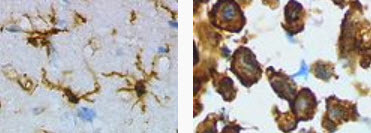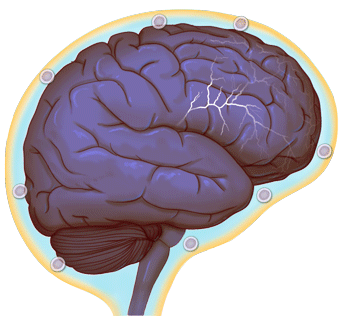The human immune system and behavior: is there a connection?
Allegedly "psychological" inclination to loneliness can be something like a quarantine on the command of the immune system to protect against pathogens

The famous mathematician and Nobel laureate John Nash suffered from schizophrenia. As it turns out, this mental disorder may be related to the functioning of the immune system. Photo: a frame from the movie "Mind Games"
Researchers from the medical school of the University of Virginia made an amazing discovery , which has already been reported on Geektimes. It makes you think about the nature of human behavior. Why are some people sociable, easy to make contact and happy to talk on meaningless topics, while others prefer to withdraw into themselves and think alone? The reason is not only in the ratio of the coefficients IQ and EQ , which are affected by genetics and education. It turns out that the human immune system has a direct effect on the brain, including on social behavior.
In other words, the “precious” and “unique” personality of a person is largely shaped by the influence of extraneous pathogens and the immune response to them.
“It used to be thought that the brain and the adaptive immune system function independently of each other, and any immune activity in the brain was considered a sign of pathology. And now we have not only shown that they work closely together, but some of our behavioral traits can also be developed due to the immune response to pathogens, ” said Jonathan Kipnis, dean of the faculty of neurology at the University of Virginia Medical School. “It seems insane, but perhaps we are just a multicellular battlefield between two ancient forces: pathogens and the immune system .” Part of our personality in reality may be dictated by the immune system. ”
')

Lymphocyte is a component of the human immune system. Photo taken by scanning tunneling microscope
In principle, in previous studies it was possible to find indirect evidence of this hypothesis about the close connection of the brain, immune system and human behavior. For example, it was known that constant stress can affect the cells of the immune system , namely, microglia - resident macrophages of the central nervous system, which play an important role in the formation and maintenance of contacts between synapses. Microglia makes up from 10% to 15% of all brain cells. Under normal conditions, it restores synapses and stimulates their growth. With frequent re-activation, however, microglia can damage nerve cells and cause inflammatory processes. The negative impact on microglia as a result of stress leads to changes in the brain and increases the risk of mental disorders like schizophrenia.
“Acute stress stimulates the immune system. In a stressful situation, the body prepares itself for battle or flight and is preparing for injuries, ”explains Dr. Astrid Friebe, whose research team at the Ruhr University in Bochum studied the mechanisms involved in this process. The problem is that microglia adapts. The more often the brain signals about stress, the greater the likelihood that the microglia will remain in this mode, and then it begins to pose a danger to the brain.

Microglia to the rat brain before and after traumatic brain damage
After this discovery, it became clear that the brain and the immune system are closely intertwined and have a mutual influence on each other. The brain is directly connected to the organs of the immune system, such as the spleen. Conversely, cells of the immune system constantly penetrate into the brain and perform various tasks there, including the restoration of damaged synapses.
Roughly summarizing the physical and mental health of a person are two sides of the same coin and cannot be maintained separately.
Scientists have discovered specific mediators of the immune system that have a direct effect on the brain. For example, it turned out that the use of the antiviral and immunomodulating drug interferon alpha , which is used in the treatment of hepatitis C, leads to the development of depression in 20-30% of patients.
Last year, a team of researchers from the University of Virginia found that meningeal membranes (covering the brain and spinal cord) in the brain directly bind the brain and lymphatic system. This discovery forced to rewrite biology textbooks, which for decades stated that the brain has no direct connection with the immune system.
Now, these researchers continued their work and decided to test the hypothesis that the immune response to pathogens is able to directly affect human social behavior. For example, that the psychological tendency to loneliness may be something of a biological defense that is necessary for the survival of an individual — the forced quarantine of an individual upon command of the immune system, in order to reduce the risk of infection when dealing with their own kind .
This is just a guess. What scientists have figured out and what is a scientific fact is that the specific immune molecule interferon gamma is closely related to the social behavior of various animals, including flies, zebrafish, mice and rats. All of them interferon gamma sharply activated (as a protective mechanism) during social interaction with other individuals.
Typically, this molecule is produced by the immune system as a response to infection by bacteria, viruses, or parasites. Using genetic modification, scientists blocked the production of interferon gamma in experimental animals. This led to two effects. First, it caused hyperactivity in certain areas of the brain. Secondly, it reduced the social activity of the experimental, that is, reduced their sociability, if in the case of danio-rerio flies and fish, we can talk about sociability. After the restoration of interferon production, gamma brain activity decreased to a normal level, and social intercourse with other individuals was restored.

Brain activity in a normal state. Illustration: University of Virginia Health System

Brain hyperactivity after blocking the immune system can reduce sociability. Illustration: University of Virginia Health System
The authors of the scientific work make the unequivocal conclusion that the immune molecule plays a "deep role in maintaining the proper social function" of the organism.
“For an organism it is extremely important to communicate with oneself like creatures. This is important for nutrition, sexual reproduction, gathering, hunting, - says Anthony J. Filiano, Ph.D., a member of the Kipnis group and the main author of the scientific work. - The hypothesis is that when organisms come together, the risk of spreading the infection increases. That is, you need to communicate with others, but at the same time your risk of spreading pathogens increases. ” That is why the interferon-gamma in the evolutionary process is used simultaneously as a more effective way to push the body to communicate with its own kind and as an antipathogenic response.
Thus, various disruptions in a person’s social behavior — mental disorders, isolation, autism, and others — can be directly related to the breakdown of the immune system.
It is unlikely that a single simple molecule can be a cause or a cure for such complex mental disorders, but it definitely plays a role in the development of a disease related to the functioning of the entire immune system as a whole.
In any case, the found link between social behavior and the immune system opens up many interesting new research directions and theories that need to be tested.
Now the research team of Kipnis from the University of Virginia works closely with the research team of Vladimir Litvak at the University of Massachusetts medical school. Vladimir Litvak and his staff have developed a computational approach to study the complex relationship between the signals of the immune system and brain functions under the influence of the disease and in a healthy state.
“Using this approach, we predicted the role of interferon-gamma, an important cytokine secreted by T-lymphocytes, in promoting social functions in the brain,” said Vladimir Litvak. “Our results contribute to a deeper understanding of social dysfunction in mental disorders and can open up new possibilities for therapeutic approaches.”
The discovery can indeed be used to treat mental disorders like autism and schizophrenia. Autism is a fairly common disorder that manifests itself in a lack of social interaction and limited human interests. Sometimes accompanied by increased intelligence (autism gene carriers usually have above-average intelligence , but the disease itself may not develop).
Symptoms of schizophrenia include a positive and negative feeling towards a person, a subject; alternation or simultaneous existence of conflicting, mutually exclusive ideas in reasoning; infinite oscillations between opposite solutions; the belief that thoughts are stolen by someone from the head or invested in it; “The sound of your own thoughts”: the feeling that the content of thoughts becomes available to other people. This is also a fairly common disorder that the famous mathematician and Nobel laureate John Nash (known for the film “Mind Games”), the philosopher Friedrich Nietzsche, the writer Nikolai Gogol, the artist Vincent van Gogh and many other prominent personalities suffered.
The scientific work was published on July 13, 2016 in the journal Nature (doi: 10.1038 / nature18626, pdf ).
Source: https://habr.com/ru/post/369503/
All Articles